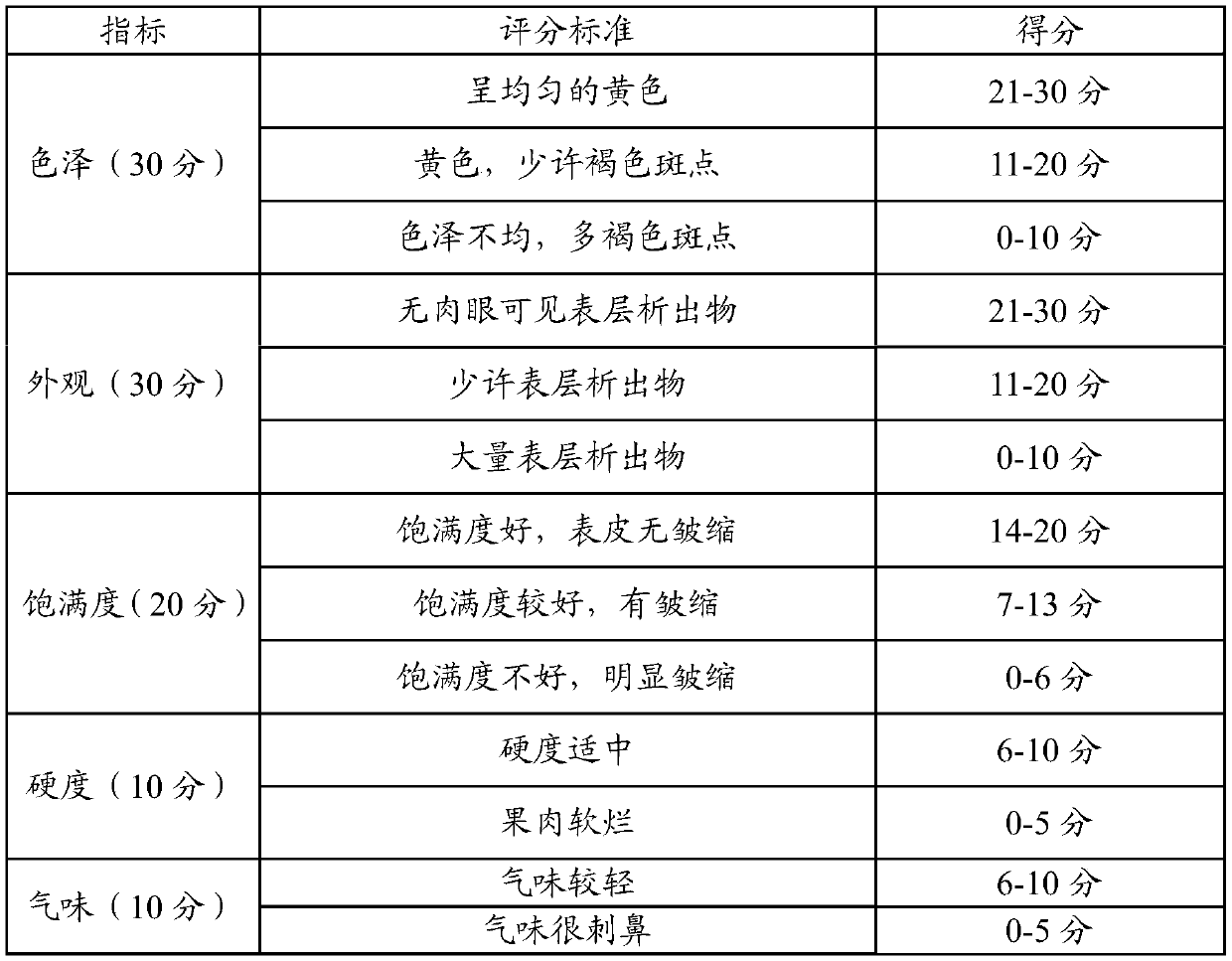A method for preventing olive precipitates from being produced
A technology for extracts and olives, which is applied in the field of preventing olive precipitates, can solve the problems affecting the surface color of olive preserves, the quality of olive preserves, the absorption of nutrients in olive preserves, and the commercial value of olive preserves, etc., to achieve the reduction of olive polyphenols, The effect of inhibiting the formation and shortening the salting time
- Summary
- Abstract
- Description
- Claims
- Application Information
AI Technical Summary
Problems solved by technology
Method used
Image
Examples
Embodiment 1
[0048] 1 Materials and methods
[0049] 1.1 Materials
[0050] fresh olives;
[0051] Reagents such as tannase, acid protease (papain), sodium chloride, calcium chloride and citric acid are all food grade and meet the national hygiene standards.
[0052] 1.2 Main instruments
[0053] WGZ-100 scattering photoelectric turbidimeter, Shanghai Precision Instrument Factory;
[0054] DK-S24 electric heating constant temperature water bath, Shanghai Jinghong Experimental Equipment Co., Ltd.;
[0055] BAS224S electronic analytical balance, Sartorius Scientific Instruments (Beijing) Co., Ltd.
[0056] 1.3 Test method
[0057] 1.3.1 Preparation of olive salt germ
[0058] Step 1: Put the olives that have been graded and removed the rotten fruit into the dermabrasion machine for rinsing until the olive skin is completely removed, and then wash with water to get the peeled olives for later use;
[0059] Step 2: Prepare sodium chloride solution: add 13g of sodium chloride per 100g of...
Embodiment 2
[0077] Repeat the process of Example 1, the difference is:
[0078] The concentration of sodium chloride in step 2 is: add 17g sodium chloride per 100g water, configure 10kg sodium chloride solution according to the above ratio; pour 10kg peeled olives and the above-mentioned 10kg sodium chloride solution into a PC barrel with a cover at the same time, and then Cover the lid of the PC barrel and place it at room temperature for 3 days;
[0079] Activation of tannase: Weigh 300 g of tannase with an activity of 500 u / g, put it into 500 g of water, stir and place it in a constant temperature water bath at 40°C for 1 hour, and stir once every 15 minutes to obtain a tannase solution;
[0080] Activation of acid protease: Weigh 1.125 g of acid protease with an activity of 400,000 u / g, put it into 22.5 g of water, stir and place it in a constant temperature water bath at 40°C for 1 hour, and stir once every 15 minutes to obtain an acid protease solution;
[0081] Pour the activated ...
Embodiment 3
[0086] Repeat the process of Example 1, the difference is:
[0087] The concentration of sodium chloride in step 2 is: add 15g sodium chloride per 100g water, configure 10kg sodium chloride solution according to the above ratio; pour 10kg peeled olives into the PC barrel with cover simultaneously with the above-mentioned 10kg sodium chloride solution, and then Cover the lid of the PC barrel and place it at room temperature for 2 days;
[0088] Activation of tannase: Weigh 200 g of tannase with an activity of 500 u / g, put it into 500 g of water, stir and place it in a constant temperature water bath at 40°C for 1 hour, and stir once every 15 minutes to obtain a tannase solution;
[0089] Activation of acid protease: Weigh 0.75 g of acid protease with an activity of 400,000 u / g, put it into 15 g of water, stir, place in a constant temperature water bath at 40°C for 1 hour, and stir once every 15 minutes to obtain an acid protease solution;
[0090] Pour the activated tannase so...
PUM
 Login to View More
Login to View More Abstract
Description
Claims
Application Information
 Login to View More
Login to View More - R&D
- Intellectual Property
- Life Sciences
- Materials
- Tech Scout
- Unparalleled Data Quality
- Higher Quality Content
- 60% Fewer Hallucinations
Browse by: Latest US Patents, China's latest patents, Technical Efficacy Thesaurus, Application Domain, Technology Topic, Popular Technical Reports.
© 2025 PatSnap. All rights reserved.Legal|Privacy policy|Modern Slavery Act Transparency Statement|Sitemap|About US| Contact US: help@patsnap.com

